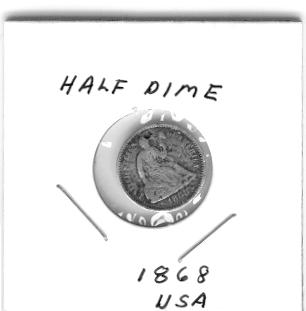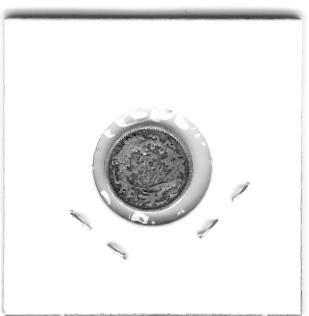
 In the wonderful world of numismatics, the incredible values for collecting do not stop with the acquisition of the precious object desired. Aside from the joys and excitement of possessing a rare and history-filled little piece of metal, there is the added boon that someday it could translate into a financial windfall for the hoarder.
In the wonderful world of numismatics, the incredible values for collecting do not stop with the acquisition of the precious object desired. Aside from the joys and excitement of possessing a rare and history-filled little piece of metal, there is the added boon that someday it could translate into a financial windfall for the hoarder.Here’s a typical example as reflected by this little bit of news from the world of coin collecting.
A 1792 half dime, believed to be one of the first coins minted by the United States, was sold at auction for more than $1.3 million Thursday night at the Central States Numismatic Society convention, officials said.
The bidding began at $750,000 and advanced to $1.15 million. With a 15 percent buyer's premium added on, the coin sold for $1,322,500.
Two worn 1792 half dimes, or "disme" as it was originally spelled, also were sold at the convention for $14,950 and $69,000, respectively.
When I first read this, careening thoughts raced in my mind, faster than the feet that would carry me to my little stash, consisting of about a dozen folders all filled with various mounted coins from various countries.


Eureka! I have a similar coin – A half-dime dated 1868. Struck and minted 76 years later than the one that sold.
So how much is it worth? Anywhere near $1.3 million? $14K? or $69K?
Can’t tell. Coin collecting unfortunately is not that simple to learn and discern. A professional appraiser will have to be consulted.
Now for those of you out there. Not to despair. Some generous and affluent gentleman is giving away priceless gems of – guess what – old pennies. You know, those little insignificant copper pennies that you like to toss aside or just throw away to the garbage can, sidewalk, or wherever place you find yourself when that loose change is handed over to you.
Outside the Nasdaq offices in New York City, Travers dispersed the first of three coins — all pennies — at a food vending stand just this week: a 1914-D Lincoln cent valued at $300.
On Tuesday Travers will spend two more pennies — a 1908-S Indian Head cent and a 1909-S VDB Lincoln Head cent valued respectively at $200 and $1,000 apiece.
So how do you know if you've got the lucky penny worth $1,000? Travers says, "On the front of the coin is the year 1909, and under the year is the mint mark "S," meaning it was minted in San Francisco. On the reverse of the coin are the designer's initials — V.D.B. (Victor David Brenner)."
No comments:
Post a Comment